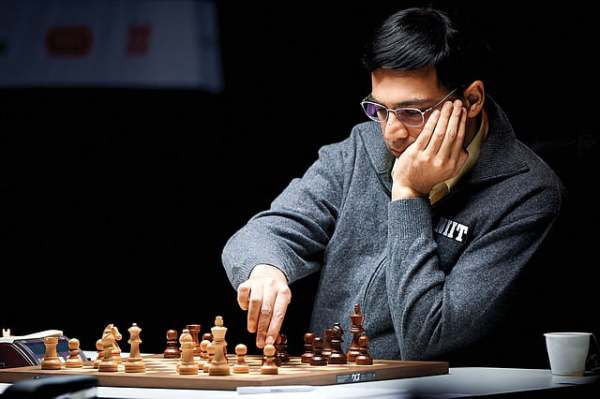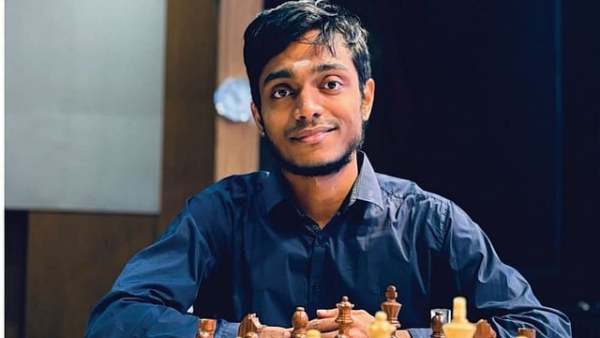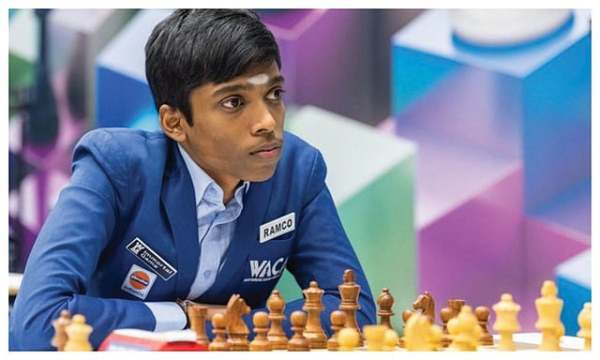
If ‘chess is the gymnasium of the mind’, as the French philosopher and mathematician Blaise Pascal is supposed to have said, Tamil Nadu seems to be where all our young mental gymnasts are. For the first time in history, five Indian players are in the world’s top 15. Of them, four (Gukesh Dommaraju, Rameshbabu Praggnanandhaa, Aravindh Chithambaram and ) are from Tamil Nadu; the fifth, Arjun Erigaisi, is from Telangana.
 Viswanathan ‘Vishy’ Anand
Viswanathan ‘Vishy’ Anand
And so much has happened so quickly. Chithambaram, long overshadowed by his younger counterparts, just won the Prague Masters, a chess super-tournament. Pranav Venkatesh has just been crowned the 2025 FIDE World Junior U20 Champion.
Earlier this year, Praggnanandhaa a.k.a. Pragg took No. 1 at the Tata Steel Chess Tournament 2025, while Erigaisi won the online Freestyle Friday two weeks in a row. At the 45th Chess Olympiad in Budapest last year, both the Indian men’s and women’s teams won gold. Indian chess is on a roll, with chess commentators hailing the start of a ‘golden era’ for the game.
 Aravindh Chithambaram
Aravindh Chithambaram
But as they say, one swallow — or in this case four stars — does not a summer make. What underscores Tamil Nadu’s dominance of the 64 squares is the number of grandmasters it has produced. Of India’s 85 grandmasters, 31 are from this state. It has produced two classical format champions, Anand and Gukesh, and it looks set to continue its dominance of the game.
Why is Tamil Nadu so good at chess? And no, the secret lies not in the rasam but in the many ingredients that come together to make a nourishing brew for chess champions of the first order.
First and foremost is the state’s strong chess culture — thanks to an ecosystem that nurtures and enables young prodigies through a strong network of chess clubs, tournaments and schools.
 Rameshbabu Praggnanandhaa
Rameshbabu Praggnanandhaa
One of the first such clubs was the Tal Chess Club, formed in 1972 — at Chennai’s Soviet Cultural Centre (but of course). Named after legendary Soviet-Latvian player Mikhail Tal, this is the place where many of the youngsters who made a name for themselves cut their chess teeth, including India’s first grandmaster. Vishy Anand is known to have spent hours at the Tal club, reading up on chess and honing his skills on the board.
Similar chess clubs have sprung up all over the state. It’s these clubs that produced the grandmasters and super grandmasters who today dominate chess not only in India, but globally. A parallel that springs to mind is Mumbai’s Shivaji Park — that fertile ground for the rise of cricket stars like Sunil Gavaskar and Sachin Tendulkar.
The second key to understanding this southern dominion is the positive effect of producing world-class players. Anand, Pragg, Gukesh and others act as role models for aspiring players. Who can forget that Anand singlehandedly raised the perception of chess in the country? And we all know what kind of a boost the non spectator sport of chess got in 1972 when American genius Bobby Fischer took on Soviet world champion Boris Spassky in what was then called the ‘match of the century’ in Reykjavik, Iceland!
However, before we gave ourselves and the world Vishy Anand, there was the legendary Manuel Aaron, India’s first international master (1961). Aaron was one of Asia’s top players at a time when chess was not popular in the continent, and won the national championship 10 times. He started the Tal club and inspired a whole generation of players, including Anand, who went on to become India’s chess pin up, sparking a love affair with the game among the young ones in his state.
In fact, leading coach R.B. Ramesh cites this too as a prime factor in the growth of chess in Tamil Nadu.
Then there is the solid support from Chennai schools. Rameshbabu, father of the brother-sister duo Pragg and Vaishali (one of India’s top women players), acknowledges the role their school, Velammal Vidyalaya, played in their growth. Budding chess talents are exempt from routine homework and given time off from classes to take part in tournaments.
Velammal has earned the sobriquet of ‘Chennai’s chess factory’ by virtue of being alma mater to 15 of India’s 31 grandmasters. Coaches like R.B. Ramesh (who trained Pragg–Vaishali) and Srinath Narayanan (both grandmasters in their own right) as well as Velavan Subbiah who runs the Velammal Nexus chess academy can feel justifiably proud of their crop. Subbiah says that 10 years ago, the academy had 300 students — now he has 2,000 in training, some as young as four.
Not to be overlooked is the encouragement provided by the state government, which awards chess champions with large purses and conducts international events in the city. To cite only two, the Carlsen–Anand world championship game was hosted by Chennai in 2013, and in 2022, the 44th Chess Olympiad was held in the town of Mamallapuram — known for its famous rock sculptures — just south of Chennai.
Both events received massive publicity and support from the state. Chennai turned into a chess-themed city, with huge cutouts and mascots; the city’s iconic Napier bridge got a chess makeover, and the local media went all out to ensure saturation coverage. The mascot for the games, Thambi (Tamil for ‘little brother’), was spotted everywhere. Both the DMK and the AIADMK have been hugely supportive of the game.
In 2013, the AIADMK government of J. Jayalalithaa started a programme to include chess in the school syllabus.
In its latest 2025 budget, the state has announced a Rs 562 crore initiative to integrate chess into the school curriculum to give it a further boost. The policy seeks to leverage a game that is low on infrastructural needs and high on brain exercise to provide cognitive benefits to schoolchildren.
One wonders, could the success of chess among the children of the state also have something to do with the social conservatism of Chennai? Privileging academic performance over extracurricular activities like sports, parents are comfortable with their children taking up chess, which is seen as a ‘brainy’ interest. Many feel that the game helps them focus and would help them to do (even) better in studies. It doesn’t hurt that chess is a rewarding career in terms of both money and fame: with good prize money, and other rewards.
When the Indian team won the Olympiad last year, it was treated to a cash prize of Rs 3.2 crore. On winning the world championship, Gukesh took home $1.5 million (Rs 12.85 crore). He was also gifted a Mercedes car while being still too young to apply for a driving licence!
There is the added aura of public recognition. Players like Pragg and Gukesh have become household names, an honour earlier reserved only for India’s star cricketers. As coach Ramesh puts it, “A chess player becoming a public figure is a good thing. It’s good for the game… we’re seeing many youngsters taking to chess now.” Additionally, their simplicity is very appealing, especially to parents and educators, who consider them worthy role models for the young.
The GOAT (greatest of all time) from Norway, former world champion Magnus Carlsen, summed it up perfectly when asked about his presence in Chennai for the 2022 Chess Olympiad. “Chennai is the hottest hub of chess… so just to be here and be a part of the chess celebration is a reason in itself.”
And from that hottest hub comes the hottest stuff. Rasam or no rasam, and with apologies to Emanuel Lasker (longest reigning champion of the world), it’s clear that when Chennai sees a good move, it looks for a better one.